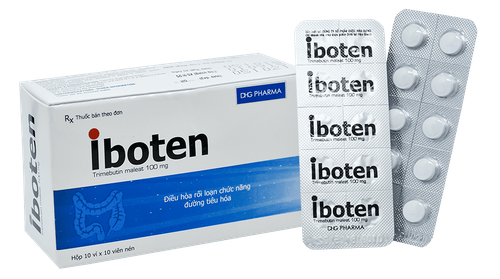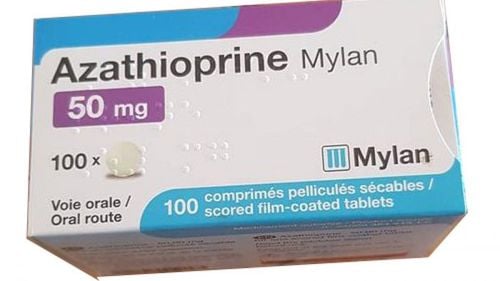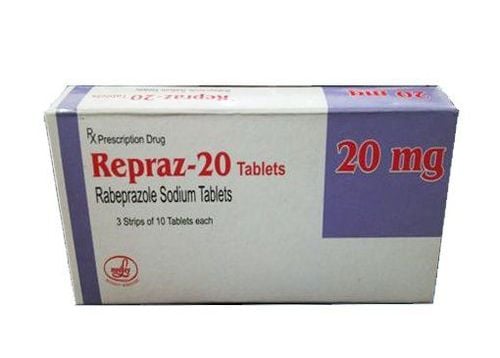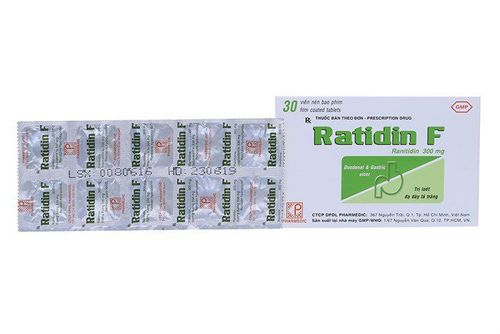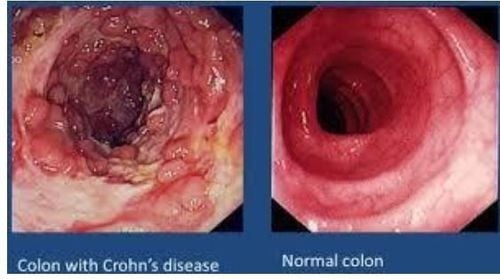This is an automatically translated article.
Posted by Master, Doctor Mai Vien Phuong - Department of Examination & Internal Medicine - Vinmec Central Park International General HospitalIn addition to causing internal symptoms such as abdominal pain, bowel movements, etc., Crohn's disease can also cause patients to experience mild to severe skin lesions.
1. Common skin lesions in people with Crohn's disease
Some common skin lesions in people with Crohn's disease include:1.1 Lesions around the anus Perianal lesions in people with Crohn's disease can be easily recognized by signs such as: The anus is red, swollen and tender. accompanied by pain. In many cases, if not detected and treated promptly, the patient can lead to anal ulcers, abscesses, fecal leakage or excess anal skin.
1.2 Mouth lesions Skin lesions from Crohn's disease can also appear in the mouth. When oral lesions appear, the person will experience pain from sores, especially inside the cheeks or lips.
Sometimes the same person also develops other symptoms of oral lesions, including:
Cleft lip; Red or cracked patches at the corners of the mouth, called angular cheilitis; Swollen lips or gums. 1.3 Metastatic Crohn's Disease Metastatic Crohn's disease is very rare. The most common areas of metastasis are: The face, genitals, extremities, or places where two patches of skin rub together.
Skin lesions from metastatic Crohn's disease are often plaque-like, reddish or purplish in color. In some cases, they can be more like sores, appearing singly or in clusters.
1.4 Crohn's Erythema Erythema nodosum is characterized by red or tender nodules that appear just below the skin. They are often found in the lower extremities (especially in front of the shins) of people with Crohn's disease.
Erythema is the most common skin manifestation of Crohn's disease, it is often accompanied by other signs such as fever, chills, body aches.
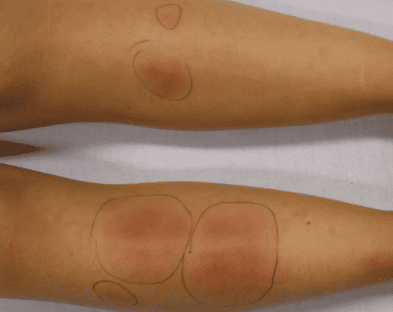
1.7 Other skin lesions associated with Crohn's disease Some conditions are associated with Crohn's disease and cause other skin symptoms including:
Psoriasis ; Vitiligo ; Systemic lupus erythematosus (SLE); Autoimmune amyloidosis.
2. Causes of skin damage in people with Crohn's disease
Some possible causes of skin lesions in people with Crohn's disease include:2.1 Reactions to medications In some cases, skin lesions have been found in people taking biologic drugs called anti-TNF drugs to treatment of Crohn's disease. These lesions look like eczema or psoriasis.
2.2 Vitamin deficiency Crohn's disease can lead to malnutrition, vitamin deficiencies in the body and as a result a variety of skin symptoms. Some examples include:
Zinc deficiency: Zinc deficiency causes red patches and also pustules on the patient's body; Iron deficiency: Iron deficiency causes red, cracked patches at the corners of the mouth in people with Crohn's disease; Vitamin C deficiency: Vitamin C deficiency causes bleeding under the skin, causing bruises to appear. Like other autoimmune diseases, Crohn's involves the body's immune system attacking healthy cells and resulting in inflammation and damage to the skin.
3. Some pictures of skin lesions in Crohn's disease
Skin symptoms associated with Crohn's disease can vary widely, depending on their type and location. Some of the most commonly seen images of skin lesions include: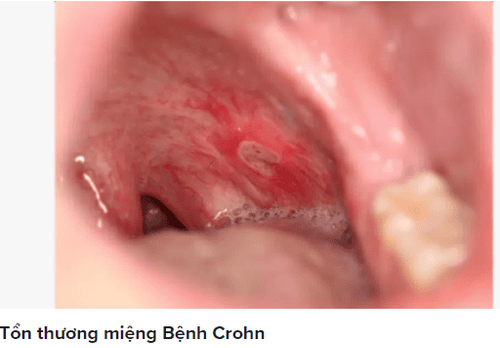
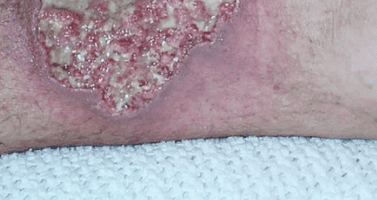
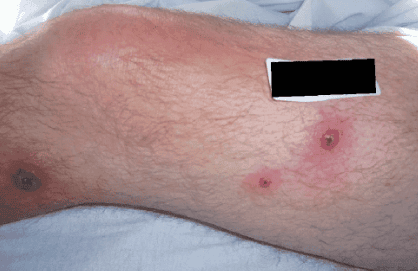
4. Treatment of skin damage caused by Crohn's disease
There are many potential treatments for the skin lesions associated with Crohn's disease. The specific treatment will depend on the type of skin damage the patient has.Sometimes medication can help relieve skin symptoms. Some of the medications your doctor may prescribe to treat skin damage associated with Crohn's disease include:
Corticosteroids that can be taken orally, injected, or applied topically. Immunosuppressants (methotrexate or azathioprine); anti-inflammatory drugs (sulfasalazine); Biologics against TNF (infliximab or adalimumab); Antibiotics can help cure a leak or an abscess. Other potential treatments include:
Discontinue anti-TNF biologic if it causes skin symptoms; Vitamin supplements when malnourished; Perform surgery to remove a severe fistula, or cut the fistula. In some cases where skin symptoms occur as part of a Crohn's disease flare-up, controlling flare-ups can also help alleviate skin symptoms. In short, if you have Crohn's disease and have skin symptoms, make an appointment with your doctor for a specific examination and timely treatment plan to prevent complications.
Currently, Vinmec International General Hospital is a prestigious address trusted by many patients to perform diagnostic techniques for digestive diseases, diseases that cause chronic diarrhea or Crohn's disease... In particular, the screening techniques for gastric cancer and gastric polyps at Vinmec were performed using the Olympus CV 190 endoscope, the NBI function (Narrow Banding Imaging - endoscopy with narrow light frequency band) for image results. analyze mucosal pathology more clearly... Thanks to that, the doctor can make an accurate diagnosis and give a timely treatment plan. Not only has a modern equipment system, Vinmec is also a place to gather a team of experienced doctors and nurses, especially, with a space designed according to hotel standards, Vinmec is guaranteed to bring to the customers Patient comfort, friendliness, peace of mind.
Please dial HOTLINE for more information or register for an appointment HERE. Download MyVinmec app to make appointments faster and to manage your bookings easily.
ReferencesBroner J Jr, et al. (2017). Purpuric lesions in a 45-year old man. DOI: 10.1016/j.ejim.2017.04.020 Gravina AG, et al. (2016). Crohn's disease and skin. DOI: 10.1177/2050640615597835 Huang BL, et al. (2012). Skin manifestations of inflammatory bowel disease. DOI: 10.3389/fphys.2012,00013 Keyal U. (2018). Dermatologic manifestation of inflammatory bowel disease: A review. discoverymedicine.com/Uma-Keyal/2018/05/dermatologic-manifestations-of-inflammatory-bowel-disease-a-review/ Lankarani KB, et al. (two thousand and thirteen). Oral manifestation in inflammatory bowel disease: a review. DOI: 10.3748/wjg.v19.i46.8571 Li Na, et al. (2018). Updated review on immune factors in the pathogenesis of Crohn's disease. DOI: DOI: 10.3748/wjg.v24.i1.15 Mayo Clinic Staff. (2019). Crohn's disease. mayoclinic.org/diseases-conditions/crohns-disease/symptoms-causes/syc-20353304





